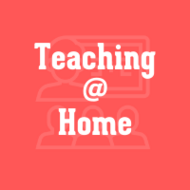Border Walls
(View Complete Item Description)This inquiry examines the 20th century history of migration from Mexico to the United States and recent efforts to limit the movement of people across the southern U.S. border. The inquiry takes its inspiration from a 2018 podcast episode by Malcom Gladwell titled, “General Chapman’s Last Stand.” The podcast is part of Gladwell’s Revisionist History series (http://revisionisthistory.com). In the podcast, Gladwell tells the story of General Leonard F. Chapman Jr., Commandant of the Marine Corps during the Vietnam War, who went on to serve as the Commissioner of the Immigration and Naturalization Service (INS) from 1972 to 1975. Chapman is credited with reforming the INS into a more efficient and effective agency, but Gladwell argues that Chapman’s efforts also led to an unintentional increase in unauthorized immigrants. In 1970, 760,000 Mexican immigrants, or 1.4% of Mexico’s population, lived in the U.S. By 2008, there were 12.7 million Mexican immigrants in the U.S. which amounted to 11% of all people born in Mexico; an increase of almost 800% in less than 30 years. The question of how and why this happened is the central focus of this inquiry.
Material Type: Lesson Plan, Primary Source













